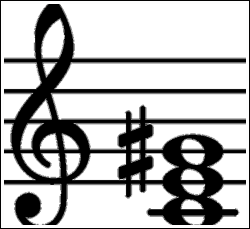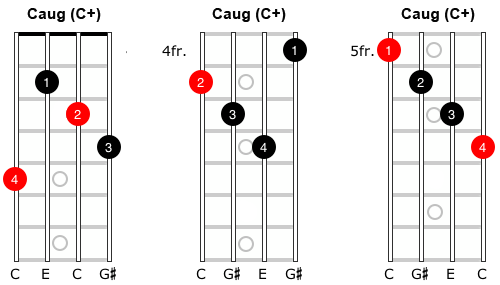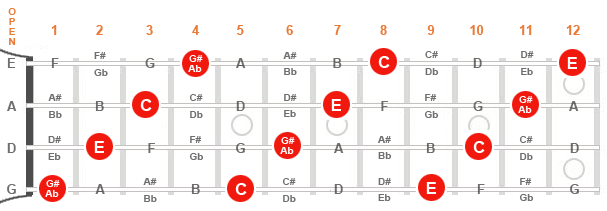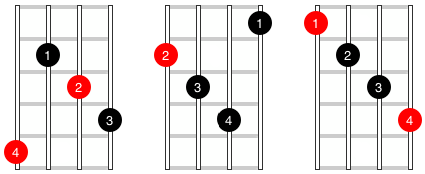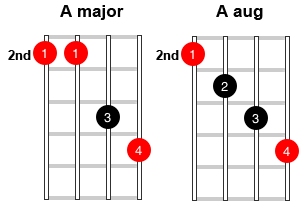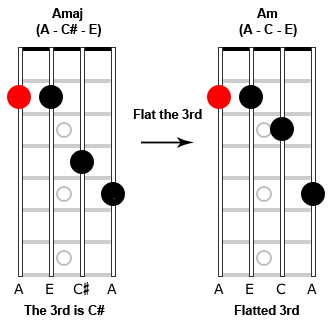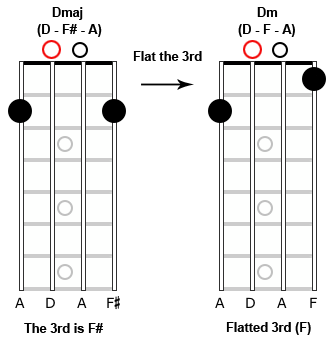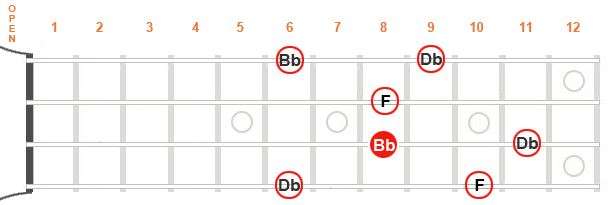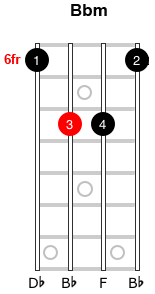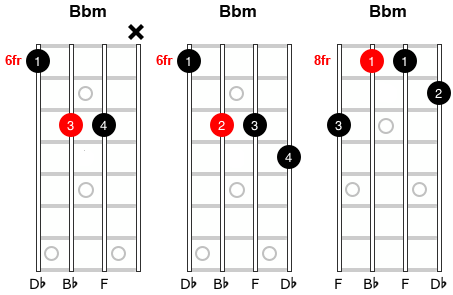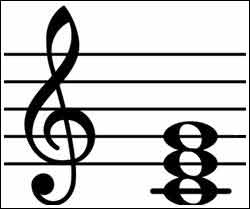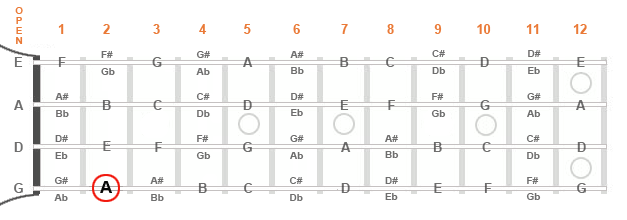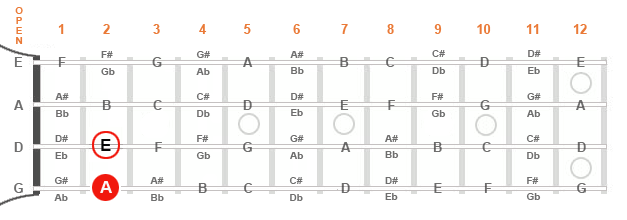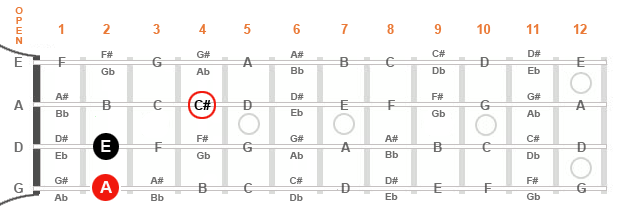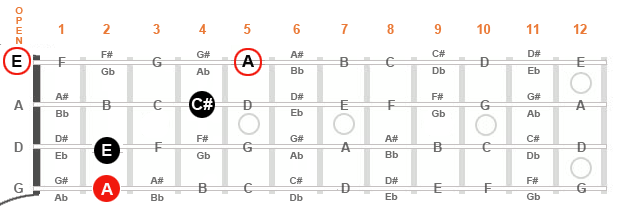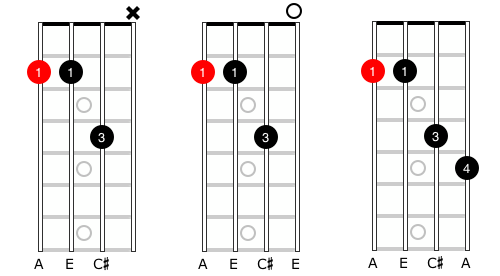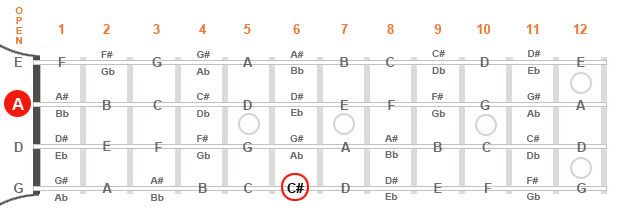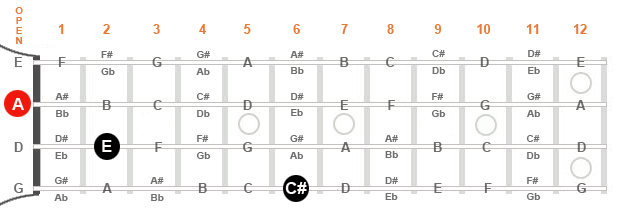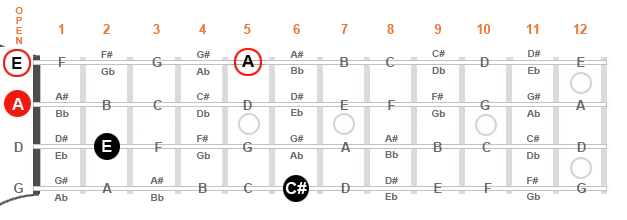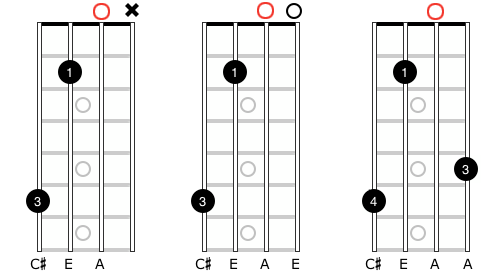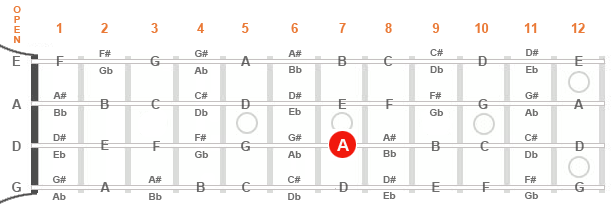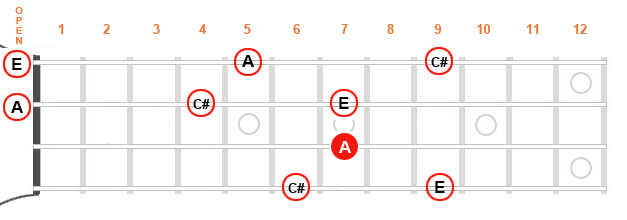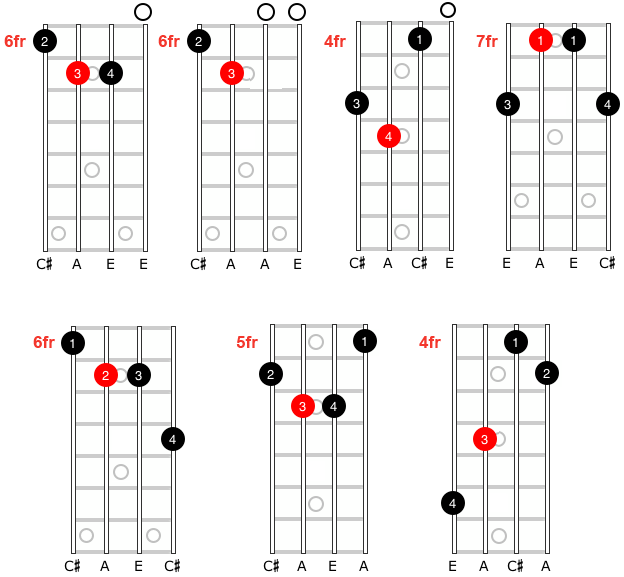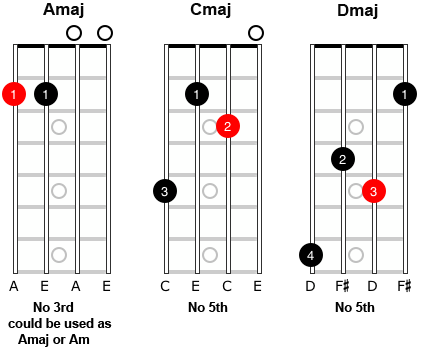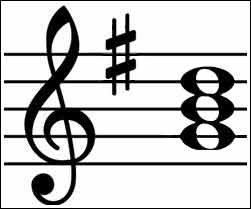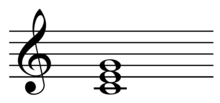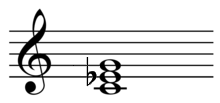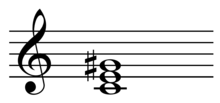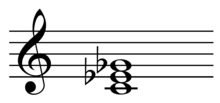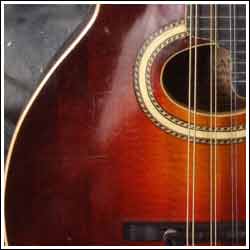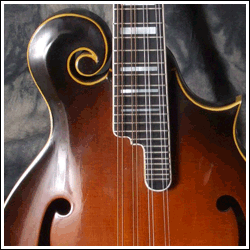
Sometimes, the minor scale is said to have a sad, melancholy, or haunting sound as compared to the Major scale. The latter often being described as happier, or more upbeat.
No matter how you might hear it, the minor scale definitely does have a very distinct sound. And, it doesn’t take long to train your ear to hear that difference.
Just close your eyes and play an A Major chord several times listening closely. Then play an Am chord.
The minor sound is very recognizable!
So, what changed?
Well, lets take a quick look at how those chords are constructed. To build a basic Major chord, you use the 1st, 3rd and 5th degree of the Major scale. In the case of A-Major, you have:
A – C# – E
You can turn any Major chord into a minor chord simply by flatting the third. If we flat the third of our A Major chord (C#), it becomes a ‘C’, and we end up with an Am chord:
A – C – E
And, that’s the whole minor sound!
The third of a chord defines whether it is Major or minor.
A flatted 3rd gives us a minor sound!
But.., I’ve gone off topic a bit. Lets forget about chords right now and get back to scales! I’d like to show you three different ways to explore the minor scale.
Minor Confusion
You might have heard of a natural minor, a relative minor, a harmonic minor, a melodic minor, a parallel minor…?
Well, don’t get confused. We’ll look at each of those terms shortly, but really, there’s only one minor scale that we’re going to worry about. I’ll show you how to find it, and how to build it. However, there is more than one way to do that, and I’d like to try and simplify it for you.
I think you’ll find it really isn’t that difficult
Major Differences
Before we begin, there is one prerequisite. You should have a good understanding of the Major Scale.
The Major Scale is pretty much the most important thing to learn in music. Many concepts and ideas in music theory are explained by demonstrating how they differ from, or how they relate to the Major scale.
And, that’s how we’re going to explore the minor scale. So, if you haven’t yet familiarized yourself with it, you should take a look at the section on ‘the Major Scale’ before continuing with this lesson.
If you’re good with that, lets move on!
The Natural Minor
A natural occurrence
First off, let’s just take a look at a minor scale.
Here’s the A-minor scale:
A – B – C – D – E – F – G – A
Those are the notes in the A-minor scale. Here’s the tab:
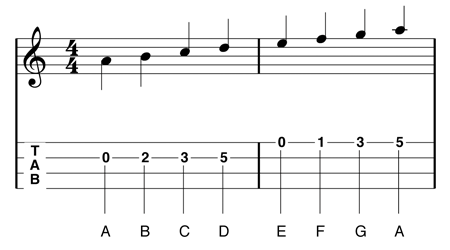
Play it a few times and listen to how it sounds.
Notice anything about those notes? They are all natural notes. There are no sharps, or flats in the key of Am.
Can you think of another key that has no sharps or flats? If you said C Major, you’d be right!
That’s because the A-minor scale occurs naturally in the C Major scale starting at the 6th note.
Take a look!

You can easily see that if we start on the 6th note (degree) of the C Major scale, we get an Am scale.
Lets look at it in tab form.

You see, there’s a minor scale that occurs naturally in every Major scale. You can take any Major scale, start on the 6th degree (note) of that scale, and you’re playing a natural minor scale. The red circle in the notation indicates the key signature (what key its in). In this case you can see there are no sharps or flats in the C Major scale. And, the A-minor scale uses all the same notes.
Its All Relative
We can see that C Major and A-minor are made up of exactly the same notes . Both scales have the same key signature (no sharps or flats). They just start on a different note, or tone.
Therefore, we can say they are related. It’s like having the same genetic make-up but different names. They are relatives. So the term ‘relative minor’ simply refers to the natural minor scale that occurs in any specific Major scale.
A-minor is the ‘relative minor’ of C Major.
And, guess what.. C Major is the relative Major of the A-minor scale!
The relative minor uses the exact same notes
as it’s relative Major, but has a different tonic (a different name).
It works every time!
This is true for all the Major scales. Every Major scale has a relative minor, and it always starts on the 6th note of that Major scale.
For instance:
The 6th note in the F Major scale is ‘D’.
F – G – A – Bb – C – D – E – F
Also, the 6th note in the D Major scale is ‘B’.
D – E – F# – G – A – B – C# – D
And, the 6th note in the Bb Major scale is ‘G’.
Bb – C – D – Eb – F – G – A – Bb
So…
- Dm is the relative minor of F Major
- Bm is the relative minor of D Major
- Gm is the relative minor of Bb Major
- etc…
I’ll give you another diagram example. We’ll take a look at G-Major. G-Major has 1 sharp (F#).

The 6th note (tone) in the key of G Major is ‘E’. Therefore, Em is the relative minor of G Major.
Starting with that E-note, and using the same notes that are in G Major, we get the key of E-minor.
Here’s the tab.
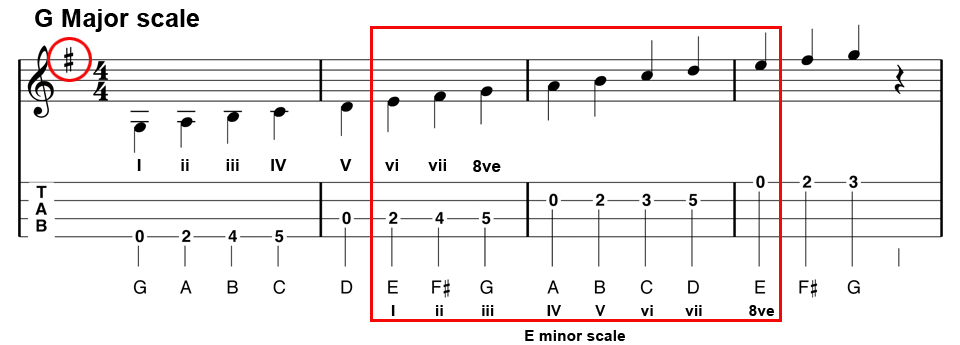
As a result, we say that E (E-minor) is the relative minor of G Major. However, the inverse is also true:
G is the relative Major of E-minor.
A Major Bonus!
Its like a 2 for 1 sale! Because, if you’ve been practicing your Major scales, then you have the relative minor scale under your fingers.
Say you know the G Major scale really well. You’ve developed a feel for those notes and can noodle around in G with ease. You know where the notes are, and can almost picture them on the fretboard. G is your tonic: you might start on that tone, or lead into it, create tension and resolve to G, etc…
Well, using all those same notes you can play in Em, simply by focusing on the E (6th) as your tonal center, instead of the G. You don’t have to think about changing any notes, you don’t have to worry about a formula…
There’s a Formula?
Of course there is. Lets take a look at that A-minor scale we’ve learned and figure out the formula.
A minor scale:
A – B – C – D – E – F – G – A
A to B is a Whole Tone
B to C is a Half Tone (Semitone)
C to D is a Whole Tone
D to E is a Whole Tone
E to F is a Half Tone (Semitone)
F to G is a Whole Tone
G to A is a Whole Tone
So… we’ve found the formula (in whole tones and half tones) for our minor scale:
W-H-W-W-H-W-W
In terms of semitones it would look like : 2 – 1 – 2 – 2 – 1 – 2 – 2
Which makes sense! The Major scale formula is W-W-H-W-W-W-H, and, by starting with the 6th note of the Major scale, all we’ve really done is move the last two intervals of the Major formula to the beginning, to build our new minor formula.

And, that’s our formula for the ‘natural minor scale’.
On the next page, we’ll take a look at the ’parallel minor’!
Don’t Miss a Beat!
Join our mailing list for new tabs, practice ideas and study material.
Keep informed of new projects. Its free!
No spam, ever. That’s a promise!

